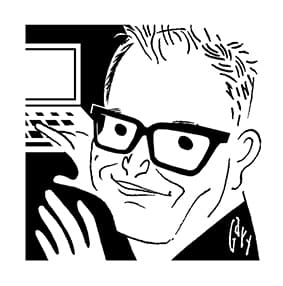The Editor: the irresistible rise of electric cars — and racing
Will electric motor racing find its purpose with the launch of the PURE ETCR electric touring car championship?

When I visited the DVLA website to tax it I saw the following note: “Between 28,000 and 36,000 people die every year as a result of air pollution.” Adding in bold: “Make your next car electric”.
There’s nothing new about government encouraging drivers to switch to less polluting cars, but seeing the message pop up in such a setting was still a little startling.
It is a sign of things to come. According to the International Energy Agency, in its June report on electrification of the global fleet there were around 17,000 electric cars on the world’s roads in 2010. In 2019 that number was 7.2m. The respected body found that in one scenario by the end of the decade the number will be 245m – or more than 30 times above today’s levels.
It is hard to see how motor sport can resist this direction of travel. Or rather why it should – except that as anyone who watched the recent Formula E extravaganza in Berlin, (see page 104), will know, the case for electric racing as a spine-tingling spectacle is very much unproven.
But next month in Denmark that may change with the delayed launch of the PURE ETCR series, the new all-electric touring car championship.
The series was announced before COVID and then put on ice, but to refresh your memories it bills itself as the world’s first multi-brand, all-electric touring car series. It is the creation of the WSC Group run by Marcello Lotti – former World Touring Car Championship promoter and founder of the TCR formula – and run by Eurosport Events, which also organises the World Touring Car Cup. The organisers say it will differentiate itself from FE by promoting performance over efficiency to change the perception of EVs.
“Could we see a battery powered ‘flying brick’ in the spirit of 1985’s 240 Turbo?”
However, the key may be that, as in the heyday of touring car racing, manufacturers see it as a way to sell cars. The mantra of ‘win on Sunday, sell on Monday’ may just become relevant again. So far, the ETCR series has confirmed SEAT, Hyundai and Alfa Romeo with two more brands to be announced.
“It’s no secret the way the automotive industry is moving,” said François Ribeiro, head of Eurosport Events when the series was first mooted. “This is not an evolution, it’s a revolution. Change is coming and motor sport cannot ignore it.” He added that ETCR’s purpose is not to “save the planet” and unlike FE won’t exist to “promote technology, but instead promote product” for car makers.
Who knows, if it catches on perhaps Volvo (which intends to put 1m electric models on the road by 2025) may even join. Could we see a battery-powered flying brick in the spirit of 1985’s ETC-winning 240 Turbo? Perhaps John Cleland could get involved…
Magazine deadlines mean that we miss the Indy 500 for this issue. However, we did catch qualifying, which featured Marco Andretti taking pole for Andretti Autosport, the team run by his father Michael. It was the first pole at the race by a member of the famous racing family for 33 years. If Marco goes on to win, it will also end the so-called ‘Andretti Curse’, which has haunted three generations of racers at Indianapolis since 1969, when Mario (Marco’s grandfather) won his – and the family’s – only Indy 500.
The Andretti story is extraordinary, and a poignant insight into it is given in a new book by John Andretti, son of Aldo, Mario’s twin brother, who sadly died from cancer before finishing it. It chronicles his experience growing up near Indianapolis as the son of an immigrant, being surrounded by a family devoted to racing, and his subsequent career.
John was a fine driver, winning races in NASCAR, IMSA plus the Daytona 24 Hours, but the book also alludes to the difficulties of growing up in a racing dynasty. As well as his uncle, he had to compete against his IndyCar champion cousins Michael and Jeff and older brother Adam. “I grew up thinking my first name was Other,” he half jokes. “As in the Other Andretti.”
Racer is out this month and 10 per cent of proceeds go to Race for Riley, John’s charity for the Riley Children’s Foundation in Indiana.

